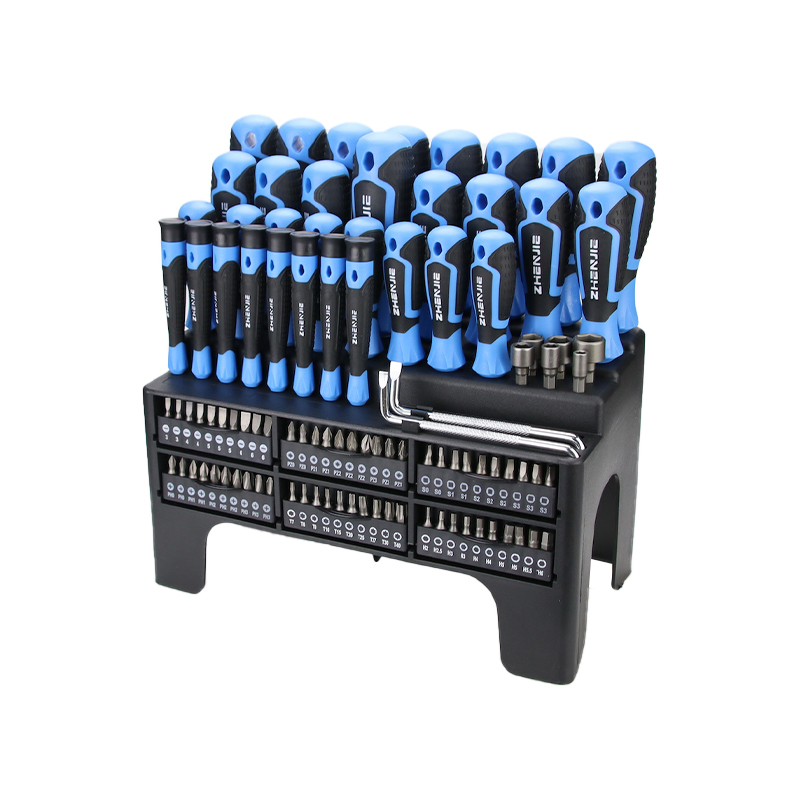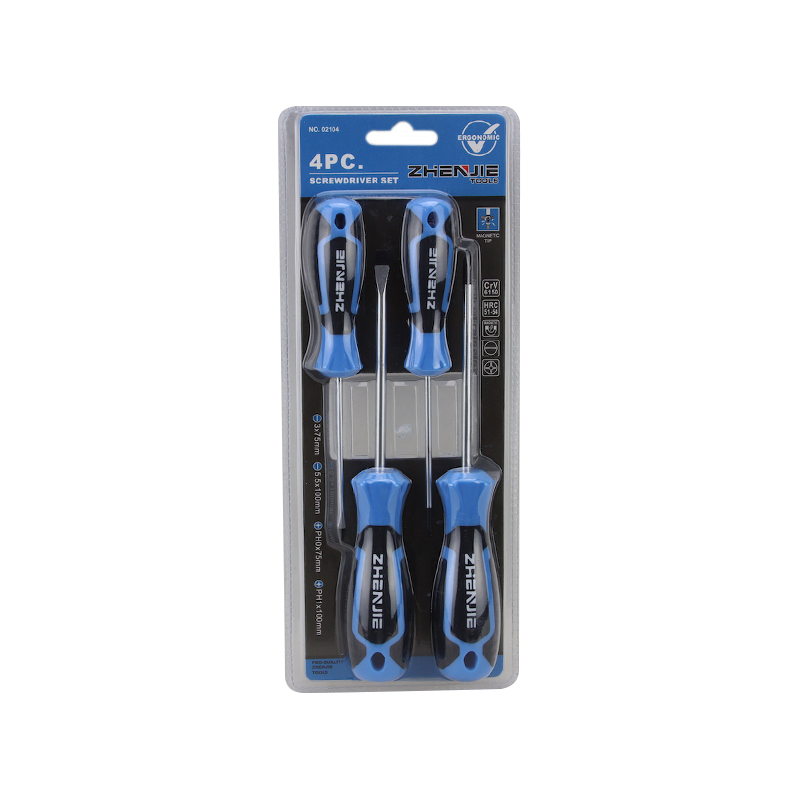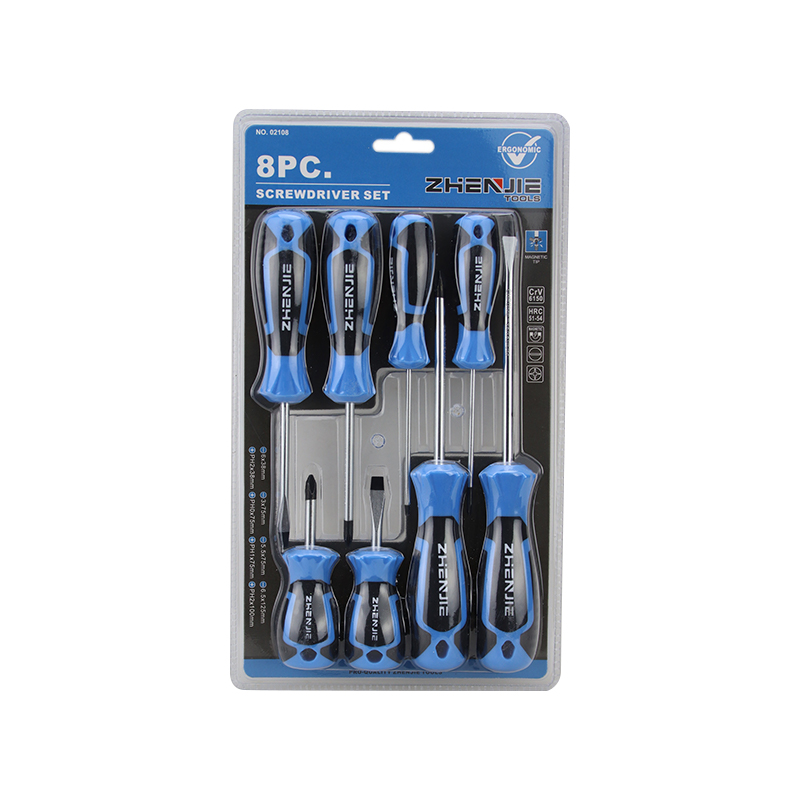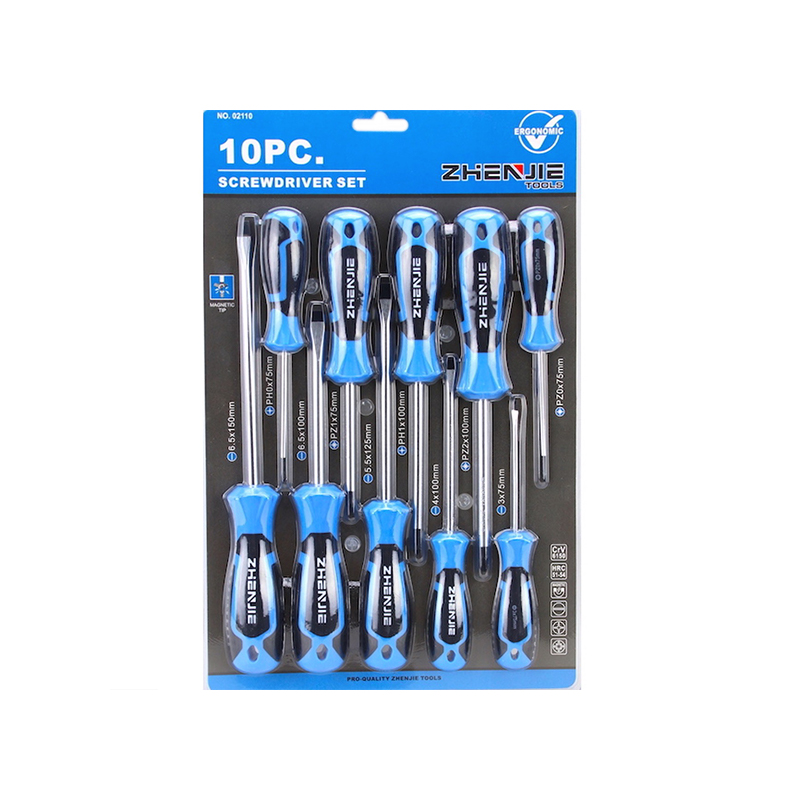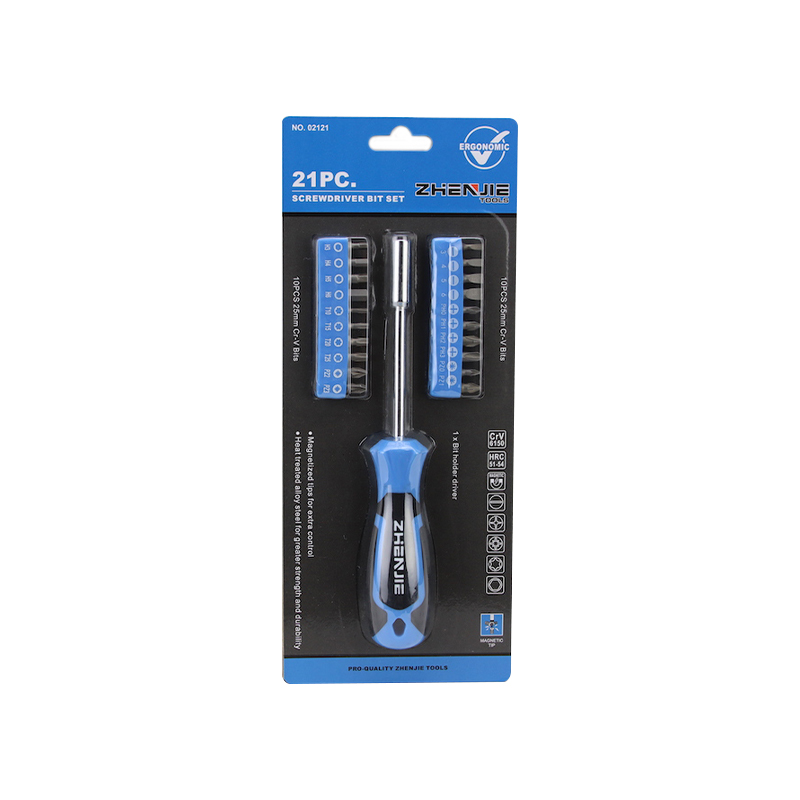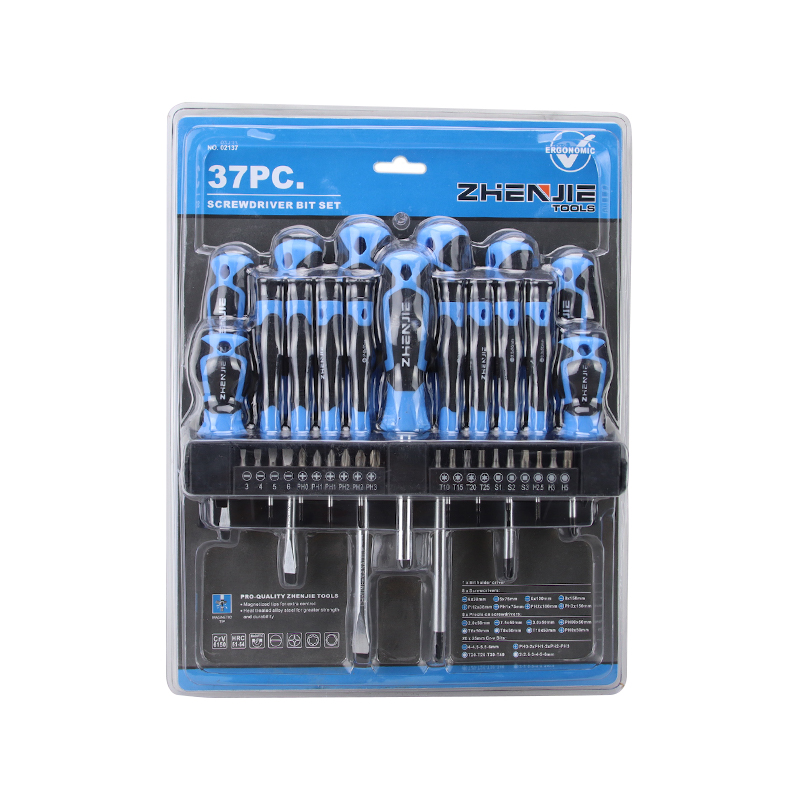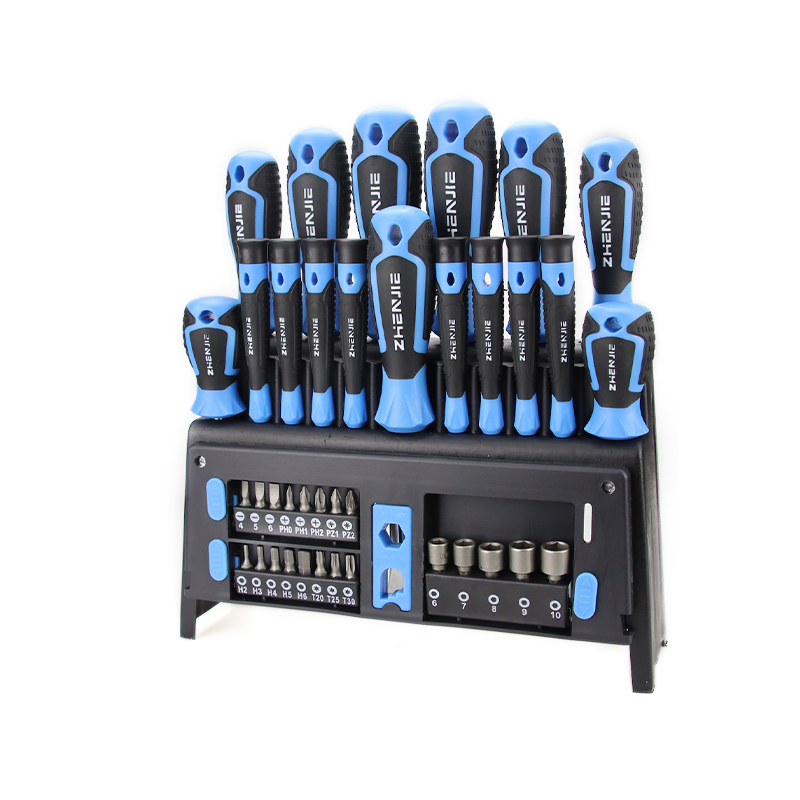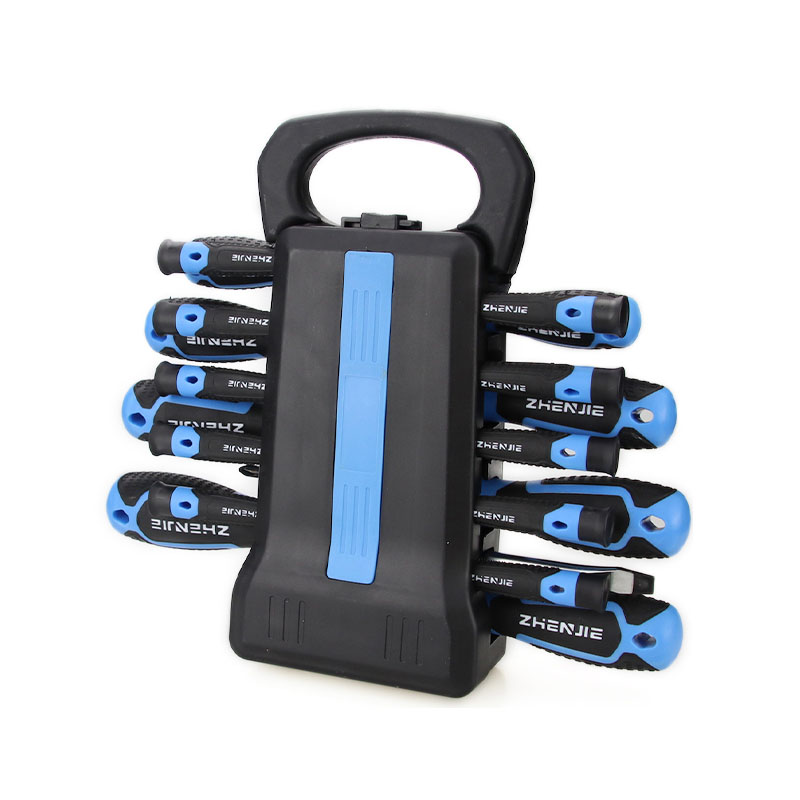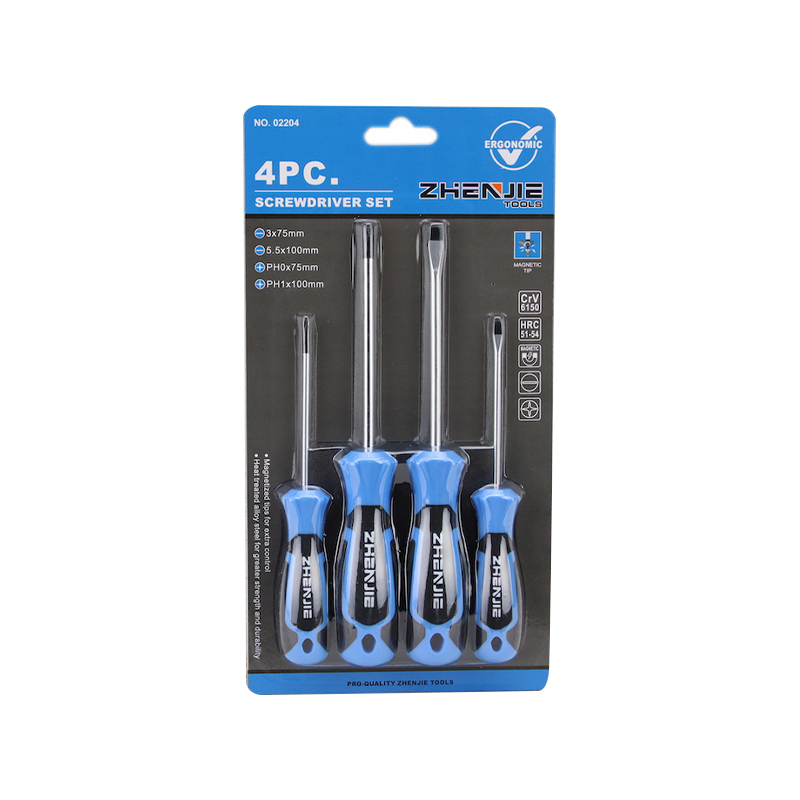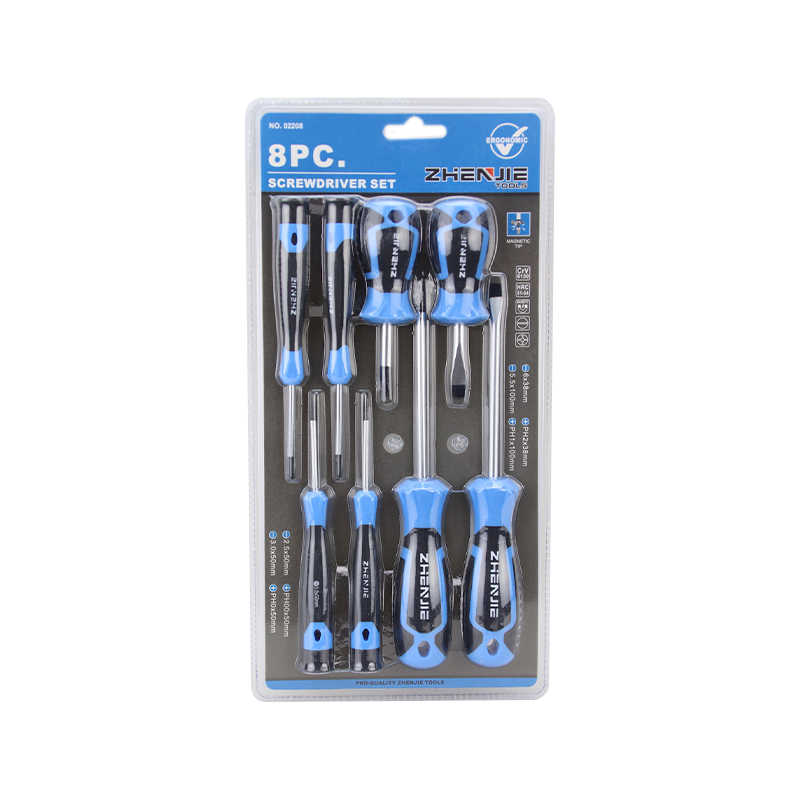We've all been there: staring at a tiny, stubborn screw on a beloved gadget, a pair of eyeglasses, or a child's toy. You reach for your trusty toolbox, grab a standard screwdriver, and quickly realize it's simply too big, too clumsy, or the wrong shape entirely. The result? A stripped screw, a damaged device, and a growing sense of frustration. This is where the unsung hero of the workbench steps in: the precision screwdriver set.
Unlike their larger counterparts, precision screwdrivers are specifically engineered for the most delicate and intricate tasks. They are your go-to tools for working with the miniature fasteners found in the world of modern electronics, intricate watches, delicate eyewear, and countless small appliances. Owning a quality set isn't just about having the right tool for the job; it's about gaining the control, accuracy, and confidence to tackle repairs and projects you once thought impossible.
In this article, we'll dive deep into what makes a precision screwdriver set an indispensable part of any hobbyist's arsenal. We'll explore their unique characteristics, uncover the myriad situations where they become invaluable, and guide you through the key features to look for when choosing your own set. We'll also break down the most common types of precision bits you'll encounter and offer practical tips for using these miniature marvels effectively. Get ready to transform your approach to small-scale repairs and DIY projects!
What is a Precision Screwdriver Set?
At its core, a precision screwdriver set is a specialized collection of tools designed to manipulate the minuscule fasteners that are ubiquitous in our modern, miniaturized world. Unlike a standard screwdriver, which might handle the screws on a light switch cover or a piece of furniture, precision screwdrivers are engineered for tasks where even a millimeter of difference in tip size can mean the success or failure of a repair. Their primary purpose is to provide the user with unparalleled control and precision, minimizing the risk of stripping delicate screw heads or damaging sensitive components.
Key Characteristics
Several key features distinguish precision screwdriver sets from their larger counterparts:
- Smaller Sizes: This is the most obvious difference. Precision screwdrivers feature significantly smaller shafts and tips, allowing them to access and engage with the tiny screws found in electronics, optics, and other miniature assemblies.
- Variety of Tips: A comprehensive precision set boasts an impressive array of bit types and sizes. Beyond the common Phillips (+) and Flathead/Slotted (-) tips, you'll frequently find specialized bits like:
- Torx: A 6-point star shape, often used for security and in automotive or appliance repairs.
- Pentalobe: A 5-point star, famously used in many Apple devices.
- Hex/Allen: A 6-sided shape, common in bicycle components and some electronics.
- Tri-wing/Y-type: A 3-pronged design, found in certain Nintendo consoles and other gadgets.
- Ergonomic Design: Precision screwdrivers are built for finesse, not brute force. Most feature a swivel cap on the handle, allowing you to press down on the screw with one hand while rotating the screwdriver with the other, providing precise turning motion without lifting your hand. Handles are often knurled (textured) or have rubberized grips to enhance control and prevent slipping, even when applying minimal torque.
- Quality Materials: Given the delicate nature of the screws they handle, the material quality of the tips is paramount. High-quality precision screwdrivers use hardened steel alloys like S2 steel or Chrome Vanadium (CrV), which resist wear, bending, and stripping themselves, ensuring a longer lifespan for both the tool and the fasteners you're working on.
- Compact Cases: Precision sets almost always come in a well-organized, compact case. This isn't just for aesthetics; it keeps the tiny bits and drivers neatly arranged, prevents loss, and makes the entire set highly portable for on-the-go repairs.
Comparison to Standard Screwdrivers

Trying to use a standard screwdriver on a small electronic device is like trying to write a letter with a crayon – it just won't work effectively. Standard screwdrivers are designed for larger screws, require more torque, and lack the fine control necessary for precision tasks. Their tips are too large, their shafts too wide, and their handles too bulky to properly fit into tight spaces or engage with miniature screw heads. Attempting to force a standard screwdriver onto a precision screw almost guarantees you'll strip the screw head, making it nearly impossible to remove, or worse, damage the device itself. A precision set fills this critical gap, providing the perfect blend of size, variety, and ergonomic design for meticulous work.
When Do You Need a Precision Screwdriver Set?
The utility of a precision screwdriver set extends far beyond the specialized workshops of technicians. In an age where even our everyday objects are packed with intricate components and tiny fasteners, these sets have become invaluable for the average hobbyist and DIY enthusiast. Here are the most common scenarios where a precision screwdriver set proves its worth:
A. Electronics Repair
This is arguably where precision screwdrivers shine brightest. Modern electronics are marvels of miniaturization, and accessing their internal workings almost always requires specialized tools.
- Smartphones and Tablets: Whether you're attempting a battery replacement, screen repair, or just trying to clear out dust from charging ports, tiny pentalobe, Phillips, and tri-wing screws are standard.
- Laptops and Computers: From upgrading RAM and SSDs to replacing cooling fans or cleaning out accumulated dust, laptops, in particular, rely on an assortment of small Phillips and Torx screws. Desktops may also have smaller screws for components like M.2 drives.
- Gaming Consoles: Popular consoles like PlayStation, Xbox, and Nintendo often use specific security screws (like Torx or tri-wing) to deter unauthorized repairs, making a precision set essential for any DIY fix or mod.
- Cameras: Digital cameras, especially mirrorless and DSLRs, contain incredibly delicate internal mechanisms held together by numerous tiny Phillips and flathead screws.
B. Eyeglass and Jewelry Repair
A loose arm on your favorite pair of spectacles or a tiny screw fallen out of a pendant can be incredibly frustrating. Precision flathead and Phillips screwdrivers, often with very fine tips, are perfect for:
- Tightening loose screws on eyeglass frames.
- Replacing tiny screws that secure lenses.
- Making minor adjustments to jewelry with small fasteners.
C. Watchmaking and Repair
Even if you're not a professional horologist, changing a watch battery or adjusting a watch band often involves opening a watch case or manipulating tiny screws that secure links. The incredibly small, delicate screws in watch movements demand the utmost precision, making these tools indispensable.
D. Small Appliances and Toys
Many household items that seem robust from the outside conceal surprisingly delicate internal components.
- Coffee Makers, Toasters, and Blenders: When these small appliances malfunction, a precision set can help you open them up for troubleshooting or minor repairs, saving you from having to buy a new one.
- Children's Toys: Battery compartments, remote controls, and intricate plastic toys often use small Phillips or security screws to prevent children from accessing internal parts, making a precision set necessary for battery changes or minor fixes.
E. Hobby and Craft Projects
For those who enjoy building and creating, precision screwdrivers are invaluable:
- Model Building: Especially for complex scale models, RC cars, drones, or intricate robot kits, where tiny screws secure delicate parts.
- Intricate DIY Projects: Any project involving small enclosures, circuit boards, or miniature mechanical assemblies will benefit from the controlled application of force that these tools provide.
F. Everyday Household Fixes
Beyond the specialized uses, you'll find countless other instances around the house where a standard screwdriver is just too bulky. Think about replacing the battery in a remote control, tightening a loose handle on a small cabinet, or even adjusting certain electronic door locks. If it has a tiny screw, a precision screwdriver set is likely the right tool for the job, helping you avoid damage and ensure a proper fix.

Key Features to Look for When Buying a Precision Screwdriver Set
With a myriad of options available, choosing the right precision screwdriver set can feel overwhelming. However, by focusing on a few critical features, you can ensure you invest in a set that meets your needs and stands the test of time.
A. Tip Variety and Size Range
The first consideration should always be the breadth and depth of the bits included. A good set won't just offer Phillips and Flathead; it will provide a comprehensive selection of specialized tips, including:
- Torx (T-series): From T1 to T10, T15, and even larger for some laptops.
- Pentalobe (P-series or TS-series): Essential for many Apple products (e.g., P2, P5, P6).
- Hex/Allen (H-series): Ranging from H0.7 to H4.0 or larger.
- Tri-wing/Y-type (Y-series): Common in Nintendo products (e.g., Y0.6, Y2.0, Y2.5).
- Spanner/U-type, Triangle, and other security bits: While less common for everyday hobbyists, these are a bonus for tackling obscure fasteners.
Beyond the type, ensure there's a good range of sizes within each category. Having multiple sizes of a Phillips bit (e.g., PH000, PH00, PH0, PH1) is crucial, as using a slightly too-small or too-large bit is a common cause of stripped screws. Consider the devices you plan to work on most frequently and verify the set includes the necessary bits for those.
B. Material Quality
The durability and effectiveness of your precision screwdrivers largely depend on the materials used.
- Tips: This is paramount. Look for tips made from S2 steel (often considered a superior tool steel for bits due to its hardness and impact resistance) or high-quality Chrome Vanadium (CrV) steel. Avoid sets made from cheap, soft metals that will quickly wear down, bend, or strip delicate screw heads. Hardened, precision-milled tips maintain their shape, providing a secure grip on fasteners.
- Handles: While less critical than the tips, the handle material contributes to comfort and longevity. Durable plastics, aluminum alloys, or even stainless steel are common. Ensure the handle feels solid and well-constructed.
C. Ergonomics
For precise work, the tool's feel in your hand is critical.
- Swivel Cap: This is a non-negotiable feature for precision screwdrivers. A smooth-spinning swivel cap at the end of the handle allows you to apply downward pressure with your palm while rotating the shaft with your fingers, enabling fine, controlled movements. Test its smoothness before committing.
- Grip: Look for handles with a knurled (ridged) surface, a rubberized coating, or other texturing. This prevents your fingers from slipping, especially when dealing with tiny screws that require minimal torque. A comfortable grip reduces hand fatigue during longer repair sessions.
- Balance and Feel: A well-balanced screwdriver feels natural in hand, allowing for better control. Avoid sets that feel flimsy or top-heavy.
D. Magnetic Tips
Many precision screwdrivers come with magnetized tips.
- Pros: This is incredibly helpful for holding tiny screws onto the bit, preventing them from dropping and getting lost in tight spaces or on the floor. It can significantly speed up assembly and disassembly.
- Cons: While generally safe, there's a slight caution with extremely sensitive electronic components (like hard drives or delicate ICs) where strong magnetic fields could theoretically interfere. For most common electronics repair, however, the convenience far outweighs this minimal risk. Many sets offer demagnetizers/magnetizers if this is a concern.
E. Case/Storage
The organization of a precision screwdriver set is almost as important as the tools themselves.
- Organization: A well-designed case will have clearly labeled slots for each bit and driver, making it easy to find the right tool quickly and ensuring none get lost.
- Protection: A sturdy case protects the delicate tips from damage when not in use or during transport.
- Portability: If you plan to carry your tools, look for a compact, durable case that can withstand being tossed into a bag without bits spilling out.
F. Brand Reputation and Warranty
While it might be tempting to opt for the cheapest set, investing in a reputable brand often pays off in terms of quality, durability, and customer support. Brands known for quality tools typically offer better warranties, standing behind their products. Reading reviews from other hobbyists can also provide valuable insights.
G. Price Point
Precision screwdriver sets range widely in price. While a very cheap set might seem appealing, it often compromises on material quality and durability. Conversely, you don't necessarily need the most expensive professional-grade set for general hobby use. Aim for a balance between cost and features, prioritizing tip material, variety, and ergonomics. A mid-range set from a respected brand often provides the best value.
Popular Types of Precision Screwdriver Bits
The true power of a precision screwdriver set lies in its versatility, which comes from the diverse array of bits it contains. Each bit type is designed to fit a specific screw head, ensuring optimal grip and preventing damage. Understanding the most common types will help you confidently choose the right tool for any miniature fastener.
Tips for Using Precision Screwdrivers Effectively
Acquiring a high-quality precision screwdriver set is just the first step; knowing how to use it correctly is what truly prevents stripped screws and damaged devices. Precision work demands patience and a delicate touch. Here are essential tips to master the art of using these miniature tools:
A. Choose the Correct Bit – Absolutely Crucial!
This is the golden rule of precision work. Using a bit that is even slightly too small or too large, or the wrong type entirely, is the primary cause of stripped screw heads.
- Match the Type: Ensure the bit's pattern (Phillips, Torx, Pentalobe, etc.) perfectly matches the screw head. Don't try to force a Phillips into a Torx, or vice versa.
- Match the Size: Within each type, there are multiple sizes. A bit should fit snugly into the screw head with minimal wiggle room. If it feels loose or wobbly, try the next size up. If it doesn't fit without forcing, try the next size down. Take the time to find the perfect fit before applying any force.
B. Apply Gentle, Consistent Pressure
Unlike larger screws that might require significant torque, tiny precision screws demand a balance of downward pressure and rotation.
- Downward Pressure: Apply firm, consistent downward pressure directly along the axis of the screw. This helps keep the bit seated firmly in the screw head, preventing it from camming out or slipping.
- Avoid Forcing: If the screw isn't turning with moderate pressure and effort, stop immediately. Forcing it will almost certainly strip the head. There might be Loctite (threadlocker), corrosion, or an underlying issue. Consider applying a small amount of heat (very carefully, and only if appropriate for the material) or a penetrating oil designed for electronics.
C. Use the Swivel Cap for Precise Rotation
The swivel cap is a key ergonomic feature of precision screwdrivers for a reason.
- Palm Control: Place the swivel cap in the palm of your hand and apply steady downward pressure.
- Finger Rotation: Use the thumb and forefinger of the same hand to gently rotate the knurled part of the handle. This two-point contact allows for extremely fine and controlled turning, preventing over-rotation or sudden slips that can damage components.
D. Work in a Well-Lit Area
Tiny screws and delicate components are easily missed in poor lighting.
- Ample Light: Ensure your workspace is brightly and evenly lit. A desk lamp with an adjustable arm or a headlamp can be invaluable for illuminating the specific area you're working on, reducing eye strain and improving accuracy.
- Magnification (Optional but Recommended): For truly tiny screws or intricate components, a magnifying lamp, jeweler's loupe, or even a smartphone camera zoomed in can help you see clearly and ensure proper bit engagement.
E. Keep Screws Organized
When disassembling a device, especially one with many different types and sizes of screws, organization is paramount.
- Magnetic Mats: A magnetic project mat with compartments is a fantastic investment. It keeps screws from rolling away and allows you to arrange them in the order they were removed, making reassembly much smoother.
- Small Containers: If you don't have a magnetic mat, use small containers, a piece of tape (sticking the screws to it in order), or even a white piece of paper where you draw the outline of the device and place screws next to their corresponding holes.
- Note Screw Length and Type: Pay attention to screw length and type. Using a screw that's too long in a hole designed for a shorter one can cause internal damage to circuit boards or components.
F. Clean and Maintain Your Set
Proper care will extend the life of your precision screwdriver set.
- Wipe Down After Use: After each use, wipe down the shafts and handles to remove any grease, dirt, or debris.
- Inspect Tips: Periodically check the tips for any signs of wear, bending, or chipping. A worn tip is more likely to strip a screw.
- Store Properly: Always return screwdrivers and bits to their designated slots in the case. This prevents loss, keeps them organized, and protects the delicate tips from damage.
By adhering to these simple yet effective practices, you'll not only protect your precision screwdriver set but, more importantly, safeguard the delicate electronics and devices you work on, ensuring successful repairs and projects.
Conclusion
In a world increasingly defined by miniaturization, the precision screwdriver set has evolved from a niche tool for specialized technicians into an indispensable asset for every hobbyist, DIY enthusiast, and anyone who prefers to fix rather than replace. We've seen that these aren't just smaller versions of standard screwdrivers; they are purpose-built instruments, meticulously designed with a variety of specialized tips, ergonomic features like swivel caps, and constructed from durable materials to handle the most delicate of tasks.
From breathing new life into your smartphone or laptop, tightening the tiny screws on your eyeglasses, to tackling intricate model builds or repairing children's toys, a quality precision screwdriver set empowers you with the control and accuracy necessary to succeed. Understanding the critical features—from the essential variety of bits like Phillips, Torx, and Pentalobe, to the importance of S2 steel tips and comfortable grips—ensures you'll choose a set that will serve you reliably for years to come.
Remember that effective use hinges on selecting the perfect bit, applying steady pressure, and maintaining an organized, well-lit workspace. With these practices, you'll protect your valuable devices from stripped screws and accidental damage.
So, the next time you encounter a miniature fastener, don't reach for the wrong tool and risk frustration. Equip your toolkit with a versatile precision screwdriver set. It's more than just a collection of tiny drivers; it's an investment in your ability to repair, innovate, and maintain the small wonders that fill our lives. It truly is an indispensable addition to any toolbox, big or small.

 English
English русский
русский Español
Español